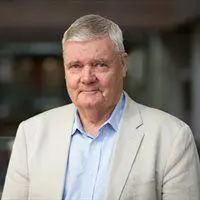
About
Jim Macnamara, PhD is an internationally recognised authority on evaluation of public communication and a pioneer in studying organisational listening within government, corporations, and non-government organisations and institutions. Before taking up an academic position, he was the founder and CEO of a leading computer-aided research company specialising in evaluating media campaigns. Recently, his research has included leading evaluation of the World Health Organization’s COVID-19 and Global Health Days communication globally. He also has advised the UK Government Communication Service (GCS), the European Commission Directorate-General for Communication (DG COMM), and the New South Wales Government in Australia on evaluation of public communication. In 2015, he launched The Organisational Listening Project, a seven-year study of how and how well organisation’s listen to their stakeholders and constituents. His extensive research has resulted in 16 books and more than 100 book chapters, academic journal articles, and academic conference papers. His recent books include Organizational Listening: The Missing Essential in Public Communication (Peter Lang, New York, 2016, 2nd edition forthcoming 2023) and Evaluating Public Communication (Routledge, 2018).
Jim is the recipient of numerous awards including The Don Bartholomew Award in 2017 for "outstanding service to the communications industry" presented by the International Association for Measurement and Evaluation of Communication (AMEC) in London and The Pathfinder Award, "the highest academic honour" awarded by the Institute for Public Relations (IPR) in the USA for scholarly research.
He is a Distinguished Professor in the School of Communication at the University of Technology Sydney (UTS) and has been a Visiting Professor at the London School of Economics and Political Science, Media and Communications Department since 2016.
Expertise
Measurement, Evaluation, Organisational listening, public communication